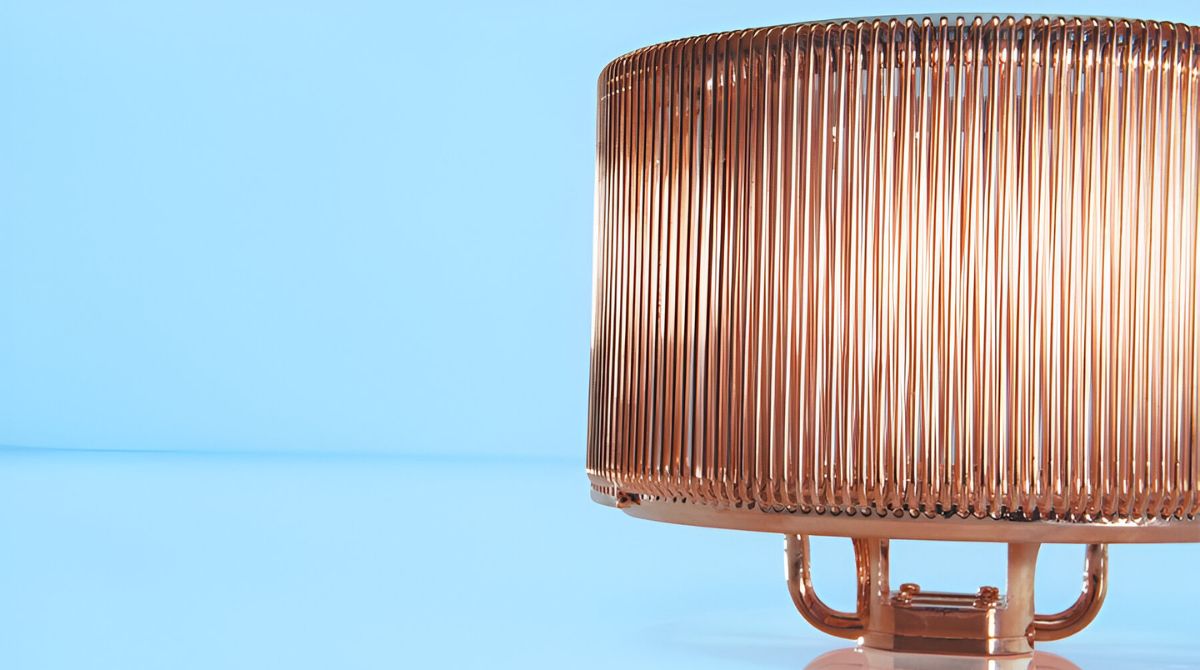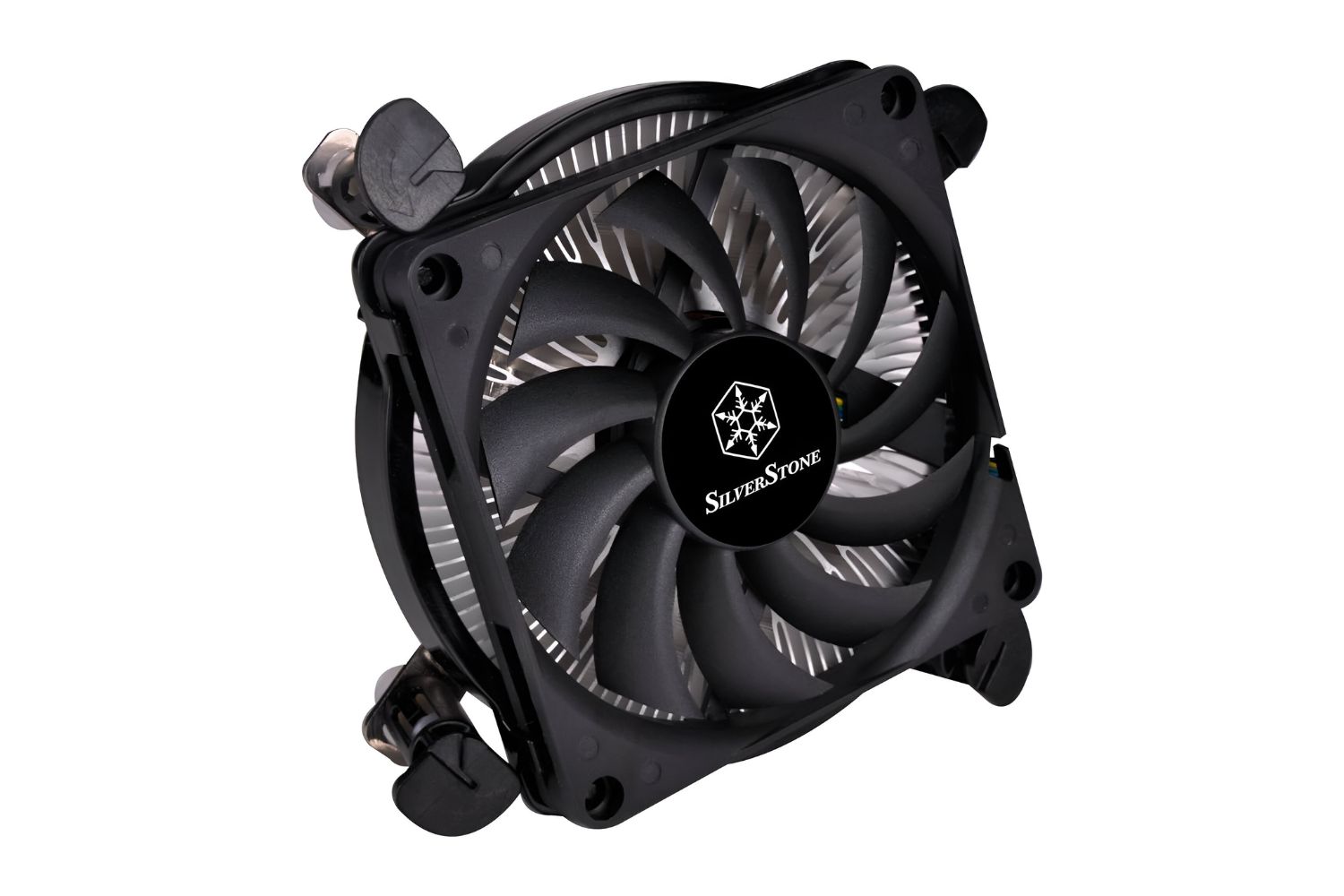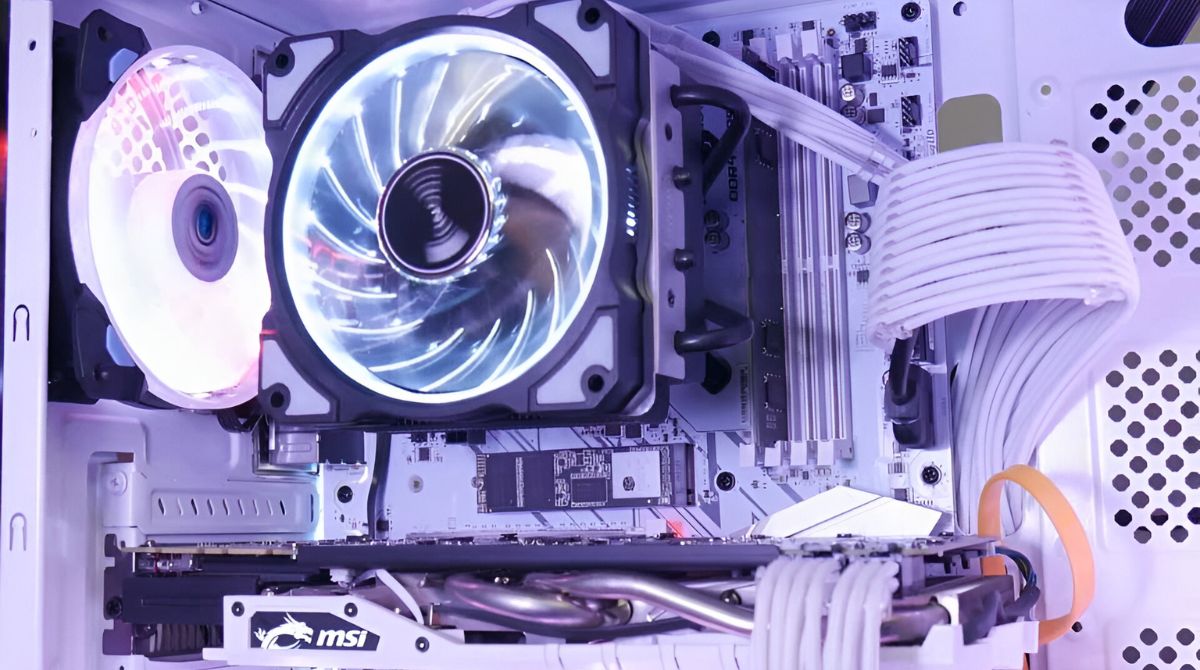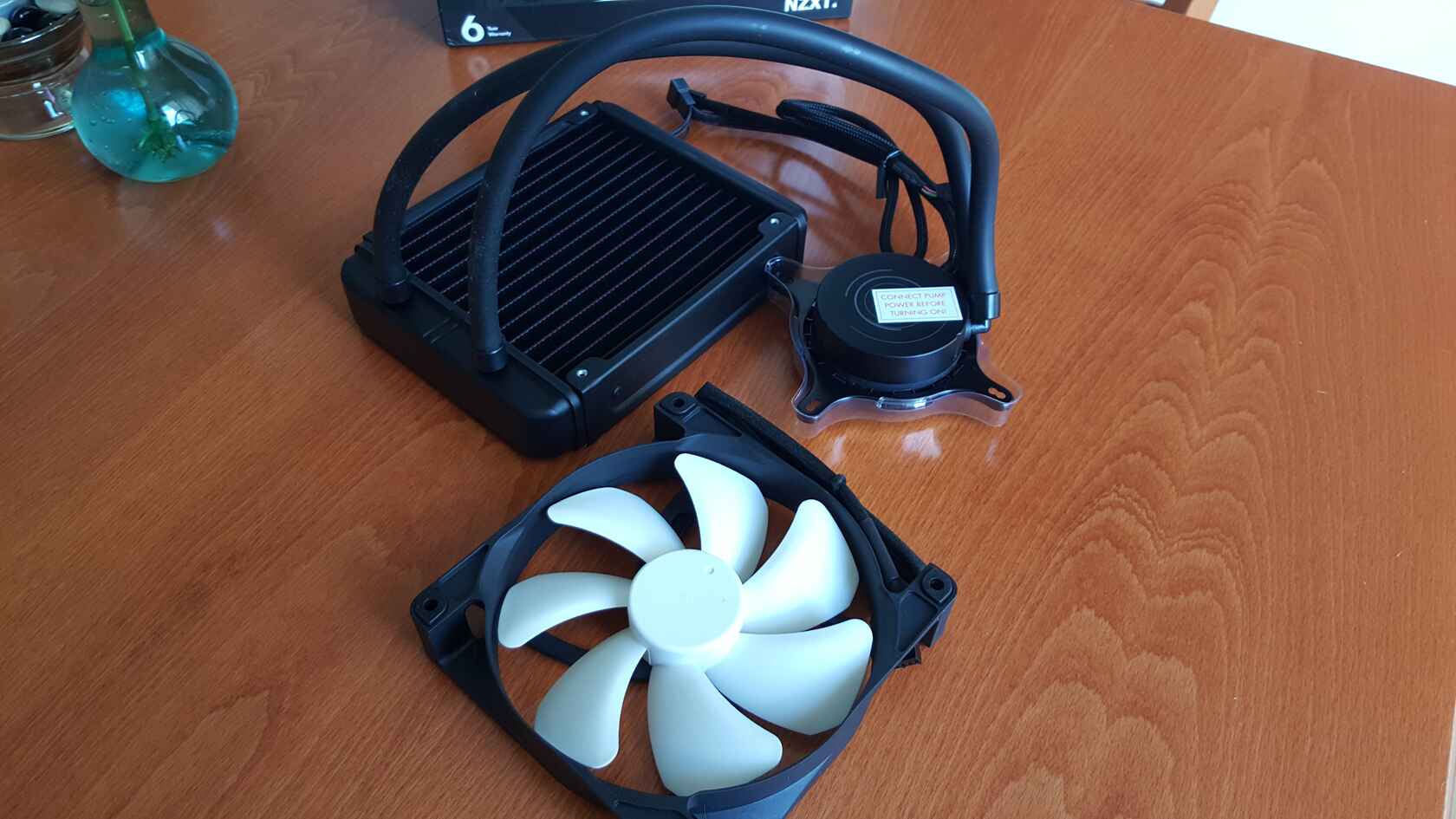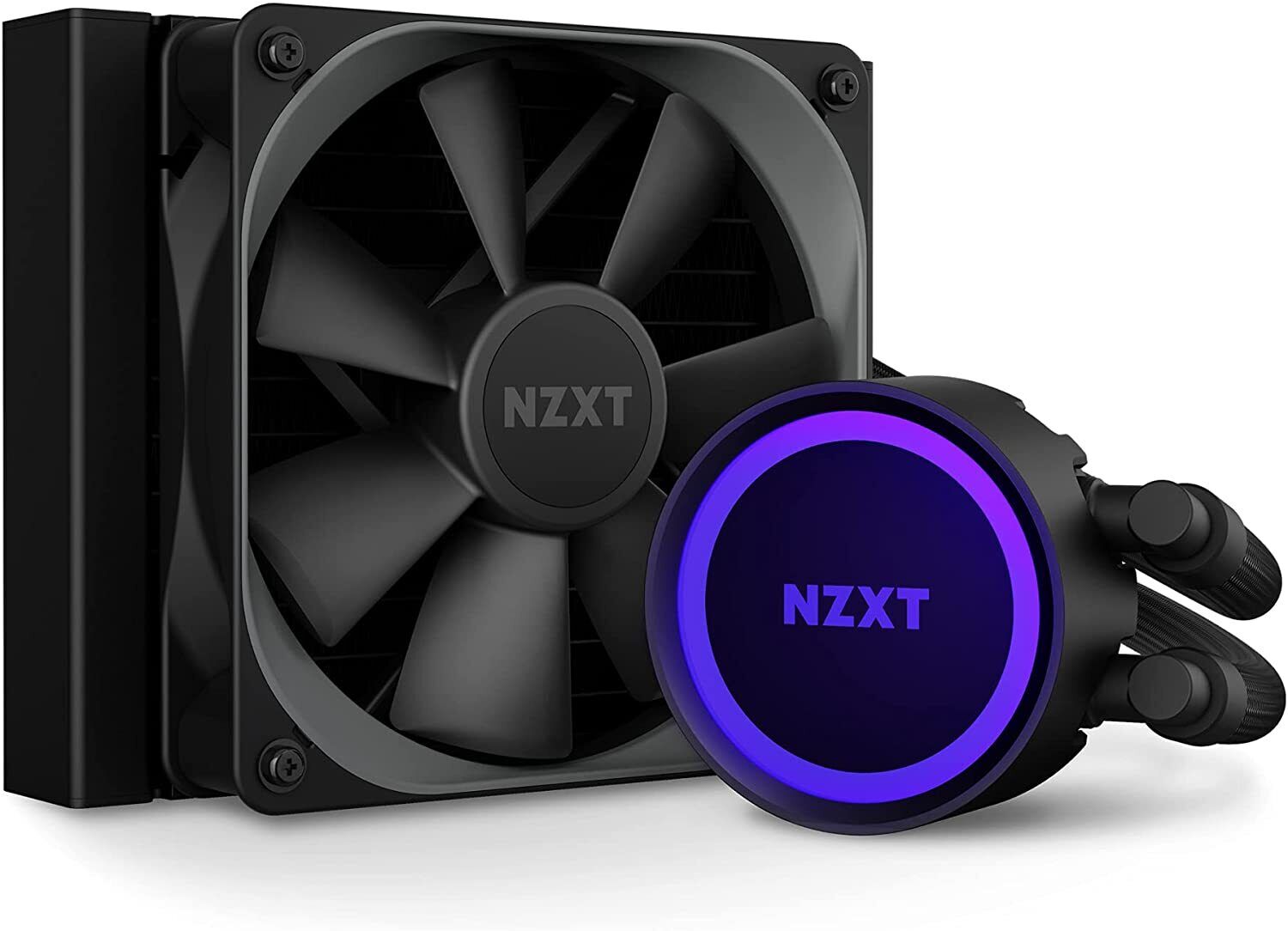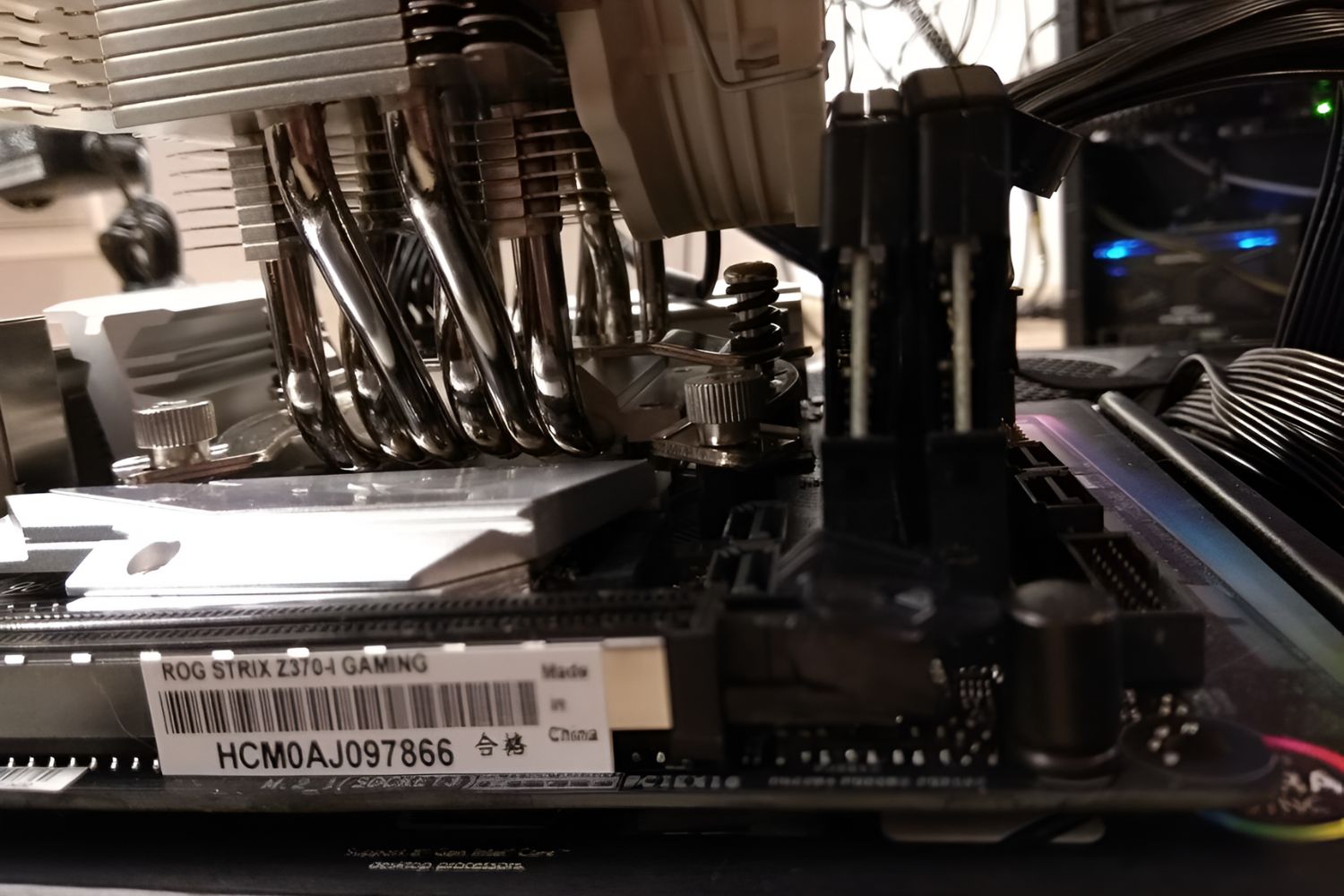Introduction
When it comes to keeping your CPU cool and functioning optimally, the CPU cooler fan plays a crucial role. One important factor to consider when choosing a CPU cooler fan is the RPM, or revolutions per minute, at which the fan operates. The RPM indicates how fast the fan spins and determines its cooling efficiency. In this article, we will explore the significance of CPU cooler fan RPM and discuss what to look for when selecting a fan for your system.
In today’s fast-paced world, computers have become an integral part of our lives. From gaming to graphic design, our computers are constantly being pushed to their limits. As a result, the temperature of our CPUs tends to rise, which can lead to performance issues and even hardware damage if not properly managed. This is where the CPU cooler fan comes into play.
The CPU cooler fan’s primary function is to dissipate the heat generated by the CPU, keeping it within safe operating temperatures. The RPM of the fan determines how efficiently it can expel this heat. Higher RPM generally results in better heat dissipation, but it also leads to increased noise levels.
Choosing the right CPU cooler fan RPM requires a careful evaluation of several factors, including the specific requirements of your system and your personal preferences. By understanding the importance of CPU cooler fan RPM and considering the right factors, you can make an informed decision that will ensure optimal cooling performance for your CPU.
What is CPU Cooler Fan RPM?
CPU Cooler Fan RPM, or revolutions per minute, refers to the speed at which the fan blades rotate. It is a measurement of how many complete rotations the fan makes in one minute. The RPM directly impacts the fan’s cooling performance, as higher RPM generally results in increased airflow and better heat dissipation.
The RPM of a CPU cooler fan is determined by the voltage supplied to it and the design of the fan itself. When the voltage is increased, the fan spins faster, resulting in higher RPM. Most modern CPU cooler fans are designed to dynamically adjust their RPM based on temperature, using fan curves or automatic fan control to maintain optimal cooling.
It’s important to note that RPM is not the only factor that determines the effectiveness of a CPU cooler fan. Other factors such as fan size, blade design, and static pressure also play a role in the overall cooling performance. However, RPM is a convenient indicator of the fan’s cooling capability and is commonly used as a reference point when comparing different fans.
CPU cooler fan manufacturers often specify the maximum RPM that their fans can reach. These maximum RPM values can range from a few thousand to tens of thousands, depending on the fan model. It’s essential to consider the maximum RPM when selecting a CPU cooler fan, as it will determine the maximum cooling potential and the noise levels produced by the fan.
While higher RPM generally results in better cooling performance, it also tends to generate more noise. The sound produced by the spinning fan blades can be a significant concern, especially for users who require a quiet computing environment. In such cases, it may be necessary to strike a balance between cooling performance and noise levels by selecting a fan with a moderate RPM range.
Importance of CPU Cooler Fan RPM
The CPU cooler fan RPM plays a vital role in ensuring the optimal functioning and longevity of your CPU. Here are a few key reasons why the RPM of your CPU cooler fan is important:
- Heat Dissipation: The primary purpose of a CPU cooler fan is to dissipate the heat generated by the CPU. The RPM directly affects the fan’s ability to move air over the CPU heatsink, which in turn helps in effectively transferring heat away from the CPU. A higher RPM generally results in increased airflow, leading to better heat dissipation and keeping the CPU temperatures within safe limits.
- Temperature Control: The RPM of the CPU cooler fan is directly linked to temperature control. As the CPU temperature rises, the fan speed increases to maintain an optimal temperature range. This automatic adjustment ensures that the CPU operates within safe limits and prevents any potential damage due to overheating.
- Overclocking Support: Overclocking, or running your CPU at higher speeds than the default settings, can significantly increase performance but also generates more heat. In such cases, a CPU cooler fan with a higher RPM range becomes crucial to handle the increased thermal load. A powerful CPU cooler fan with a higher RPM can help keep the temperature in check and enable stable overclocking without risking damage to your CPU.
- Noise Level: While the RPM of a CPU cooler fan directly impacts its cooling performance, it also affects the noise levels produced by the fan. Higher RPM fans tend to create more noise due to the increased speed of the spinning blades. It’s essential to strike a balance between cooling performance and noise levels based on your requirements. Some users may prioritize a quieter computing environment and opt for CPU cooler fans with lower RPM but still adequate cooling capabilities.
- Longevity of Components: Adequate cooling, achieved through the correct RPM of the CPU cooler fan, not only keeps the CPU temperature in check but also helps extend the lifespan of other components in your system. Excessive heat can damage not only the CPU but also other sensitive components like the motherboard, RAM, and power supply. By maintaining optimal temperatures, the CPU cooler fan RPM contributes to the overall longevity and stability of your system.
Understanding the importance of CPU cooler fan RPM is crucial in selecting the right fan for your system. By considering factors such as heat dissipation, temperature control, overclocking support, noise levels, and component longevity, you can make an informed decision to ensure your CPU remains cool and performs optimally in any computing task.
Factors to Consider
When selecting a CPU cooler fan based on its RPM, there are several important factors to consider. These factors will help you determine the right RPM range for your specific needs. Here are the key factors to keep in mind:
- CPU Power and Thermal TDP: The power and thermal design power (TDP) of your CPU is an essential consideration. Higher TDP CPUs generate more heat and require CPU coolers with higher RPM to effectively dissipate the heat. Ensure that the RPM range of the CPU cooler fan you choose is suitable for the TDP of your CPU.
- Intended Usage: Consider the purpose for which you will be using your computer. If you primarily perform resource-intensive tasks such as gaming, video editing, or 3D rendering, a higher RPM CPU cooler fan may be necessary to handle the increased heat generated by these tasks. On the other hand, if you use your computer for lighter tasks or office work, a moderate RPM range might suffice.
- Case Airflow: The overall airflow within your computer case is crucial in maintaining optimum temperatures. If your case has excellent airflow with multiple fans, you may be able to choose a CPU cooler fan with a lower RPM range as the overall cooling performance will be enhanced by better case ventilation.
- Noise Level Tolerance: Consider your noise level tolerance. Higher RPM fans tend to generate more noise, which may be undesirable if you prefer a quieter computing environment. If noise is a concern, look for CPU cooler fans specifically designed for low noise operation, even at higher RPM.
- Budget: Cost is always a factor to consider. CPU cooler fans with higher RPM ranges may be more expensive due to the advanced technology and performance they offer. Determine your budget and find a balance between the RPM range and the cost that fits within your financial constraints.
By taking these factors into account, you can narrow down your options and choose a CPU cooler fan with the right RPM range for your specific needs. It’s important to find a balance between cooling performance, noise levels, and budget to ensure that your CPU remains cool and stable during operation.
Ideal RPM Range
The ideal RPM range for a CPU cooler fan depends on various factors, such as the specific CPU you are using, the cooling requirements of your system, and your noise level tolerance. While there is no one-size-fits-all answer, here are some guidelines to help you determine an ideal RPM range:
CPU Manufacturers’ Recommendations: CPU manufacturers often provide recommendations regarding suitable cooling solutions for their processors. These recommendations may include guidance on the RPM range for the CPU cooler fan. Checking the manufacturer’s website or product documentation can give you an idea of the recommended RPM range for optimal performance and longevity of your CPU.
Temperature Requirements: Consider the desired temperature range for your CPU. If you prefer to keep temperatures as low as possible, you may opt for a CPU cooler fan with a higher RPM range to ensure efficient heat dissipation. On the other hand, if you are comfortable with slightly higher temperatures, you can choose a fan with a lower RPM range to reduce noise levels.
Noise Considerations: Evaluate your tolerance for fan noise. Higher RPM fans tend to produce more noise due to the increased speed of the spinning blades. If having a quiet computing environment is important to you, opt for a CPU cooler fan with a lower RPM range or look for fans specifically designed for low noise operation.
System Cooling Setup: Consider the overall cooling setup of your system. If your case has excellent airflow with multiple fans and efficient cooling, you may be able to choose a CPU cooler fan with a lower RPM range, as the overall cooling performance will still be maintained by the effective case ventilation.
Personal Preference: Ultimately, your personal preference plays a crucial role in determining the ideal RPM range. Consider your specific needs, usage patterns, and priorities. If you prioritize performance and are not bothered by fan noise, you can opt for a higher RPM fan. Conversely, if a quieter system is important to you, choose a fan with a lower RPM range even if it means sacrificing some cooling performance.
While there is no universally ideal RPM range, it is generally recommended to choose a CPU cooler fan that provides a good balance between cooling performance and noise levels. It’s crucial to strike a balance based on the specific requirements of your system and your personal preferences to ensure that your CPU stays cool and your computing experience remains enjoyable.
Overclocking and High RPM Fans
Overclocking is the process of running your CPU at higher speeds than its default settings to achieve better performance. However, overclocking generates more heat and puts increased stress on the CPU. To effectively cool an overclocked CPU, high RPM fans are often necessary. Here’s why:
Increased Heat Dissipation: Overclocking increases the heat output of the CPU. High RPM fans provide greater airflow, resulting in improved heat dissipation. This helps prevent the CPU from reaching dangerous temperatures, enabling stable and sustained overclocking without the risk of thermal throttling or system instability.
Efficient Cooling for Extreme Overclocking: Extreme overclockers, aiming for substantial performance boosts, push their CPUs to their limits. In these cases, high RPM fans are crucial to dissipate the extreme levels of heat generated by the heavily overclocked CPUs. Without sufficient cooling provided by high RPM fans, the CPU may quickly overheat and even become damaged.
Increased Static Pressure: High RPM fans often have improved static pressure capabilities. This is important when cooling components like radiator fins or heatsinks, where there may be resistance to airflow due to their design. High static pressure allows the fan to push air through these resistance points, ensuring efficient cooling even in challenging cooling scenarios.
Optimal Cooling for Overclocking: When you overclock your CPU, achieving and maintaining stable temperatures is vital. High RPM fans provide rapid airflow, reducing the time it takes to cool the CPU between bursts of intense activity. This prevents temperature spikes and helps maintain consistent performance during demanding tasks.
Noise Considerations: It’s important to note that high RPM fans tend to produce more noise due to the increased speed of the fan blades. If noise is a concern, consider fans designed for low noise operation, even at higher RPM ranges. Additionally, ensuring adequate case insulation, fan placement, and using fan speed control options can help mitigate noise issues associated with high RPM fans.
When overclocking your CPU, it’s essential to carefully consider the cooling requirements. Ensuring efficient heat dissipation through high RPM fans is crucial to maintain stable and reliable performance. However, be mindful of potential noise concerns and take necessary steps to strike a balance between cooling performance and noise levels based on your requirements.
How to Check and Adjust CPU Cooler Fan RPM
Checking and adjusting the CPU cooler fan RPM can be done through various methods depending on your system and the fan control options available. Here are some common methods to help you effectively monitor and adjust the CPU cooler fan RPM:
1. BIOS/UEFI Settings: Most modern motherboards offer fan control options within the BIOS or UEFI settings. Access the BIOS/UEFI by restarting your computer and pressing the appropriate key (often Del or F2) during startup. Navigate to the fan control section and look for options related to RPM control. From here, you can monitor the RPM and adjust fan speed settings based on your preferences and cooling requirements. Make sure to save changes before exiting the BIOS/UEFI settings.
2. Fan Control Software: Manufacturers often provide dedicated software for controlling and monitoring the fan RPM. These software utilities allow you to check the current RPM, adjust fan speed settings, and create custom fan profiles. Install the software provided by your motherboard or CPU cooler fan manufacturer, and follow the instructions to access the fan control options.
3. Third-Party Fan Control Software: If your motherboard or fan manufacturer does not provide dedicated software, there are third-party solutions available that offer advanced fan control options. Examples include SpeedFan, Open Hardware Monitor, and MSI Afterburner. These software applications allow you to monitor and adjust fan speeds to achieve the desired RPM range.
4. Hardware Fan Controllers: For more advanced control over your CPU cooler fan RPM, you can consider installing a hardware fan controller. These devices allow you to directly manipulate fan speeds by adjusting knobs or sliders. Hardware fan controllers are typically installed in an available drive bay on your computer case and provide real-time monitoring and precise RPM adjustments.
5. Fan Speed Adapters/Reducers: Some CPU cooler fans come with adapters or reducers that allow you to adjust the RPM range. These adapters reduce the voltage supplied to the fan, thereby lowering the fan speed and RPM. Refer to the fan’s user manual or manufacturer’s instructions for details on how to install and use these adapters.
When adjusting the CPU cooler fan RPM, it’s important to strike a balance between cooling performance and noise levels based on your specific requirements. Monitor the CPU temperature and system stability when making changes to ensure that the CPU remains adequately cooled while maintaining an acceptable noise level.
Note: It’s essential to refer to the documentation and guidelines provided by your motherboard or CPU cooler fan manufacturer for specific instructions on controlling and adjusting the fan RPM. This will ensure that you make the appropriate changes without causing any damage to your system.
Tips for Choosing the Right CPU Cooler Fan RPM
Choosing the right CPU cooler fan RPM requires careful consideration to ensure optimal cooling performance and a satisfactory noise level. Here are some helpful tips to guide you in selecting the ideal RPM range for your CPU cooler fan:
1. Understand Your Requirements: Consider your system’s specific cooling requirements. Evaluate the power and thermal design power (TDP) of your CPU, the level of overclocking if any, and the intended usage of your computer. By understanding your unique requirements, you can better determine the necessary RPM range to meet your cooling needs.
2. Consider Noise Levels: Assess your tolerance for fan noise. Higher RPM fans tend to produce more noise due to the increased speed of the fan blades. If noise levels are a concern, opt for fans specifically designed for low noise operation, even at higher RPM ranges. Additionally, consider implementing noise-reduction measures such as proper case insulation and fan placement.
3. Check Manufacturer’s Recommendations: Refer to the CPU and CPU cooler fan manufacturers’ recommendations. CPU manufacturers often provide guidance regarding suitable cooling solutions and RPM ranges for their processors. Pay attention to these recommendations as they are specific to the compatibility and optimal performance of your CPU.
4. Consider Case Cooling: Evaluate the overall airflow and cooling setup of your computer case. If your case has good airflow with sufficient intake and exhaust fans, it can contribute to better cooling performance. This may allow you to select a CPU cooler fan with a lower RPM range, as the overall cooling efficiency of the system is enhanced by improved case ventilation.
5. Research and Read Reviews: Take the time to research and read customer reviews or expert opinions on different CPU cooler fans. Look for feedback regarding cooling performance, noise levels, and RPM ranges. This will give you valuable insights and help you make an informed decision based on real-world experiences.
6. Budget Considerations: Determine your budgetary constraints. Fans with higher RPM ranges and advanced cooling capabilities may be more expensive. Set a budget and find a suitable balance between the RPM range, cooling performance, and cost to ensure you choose a fan that fits your financial capabilities.
7. Experiment and Adjust: It may take some trial and error to find the optimal RPM range for your specific needs. Experiment with different fan speeds and monitor CPU temperatures and system stability. Make adjustments as necessary to find the right balance between cooling performance and noise levels that suit your preferences and requirements.
By keeping these tips in mind, you can confidently choose the right CPU cooler fan RPM to ensure effective and efficient cooling for your CPU while maintaining an acceptable noise level that suits your needs.
Conclusion
Choosing the right CPU cooler fan RPM is essential for maintaining optimal cooling performance while balancing noise levels and personal preferences. The RPM directly affects the fan’s ability to dissipate heat and keep the CPU within safe operating temperatures. By understanding the importance of CPU cooler fan RPM and considering various factors, you can make an informed decision that best suits your requirements.
Factors to consider when selecting the CPU cooler fan RPM include the power and thermal design power (TDP) of your CPU, intended usage of your system, case airflow, noise level tolerance, and budgetary constraints. Taking these factors into account, you can determine the ideal RPM range for your CPU cooler fan.
Monitoring and adjusting the CPU cooler fan RPM can be done through BIOS/UEFI settings, dedicated fan control software, third-party software, hardware fan controllers, or fan speed adapters/reducers. It’s important to carefully follow the manufacturer’s instructions and strike a balance between cooling performance and noise levels when making adjustments.
When choosing the right CPU cooler fan RPM, it’s crucial to consider the specific requirements of your system, evaluate noise level preferences, and conduct thorough research. By understanding your needs and considering these tips, you can ensure efficient heat dissipation, temperature control, and longevity of your components.
In summary, selecting the ideal CPU cooler fan RPM requires careful consideration of various factors. By finding the right balance, you can ensure effective cooling, maintain safe CPU temperatures, and enjoy a satisfactory noise level in your computing environment.









